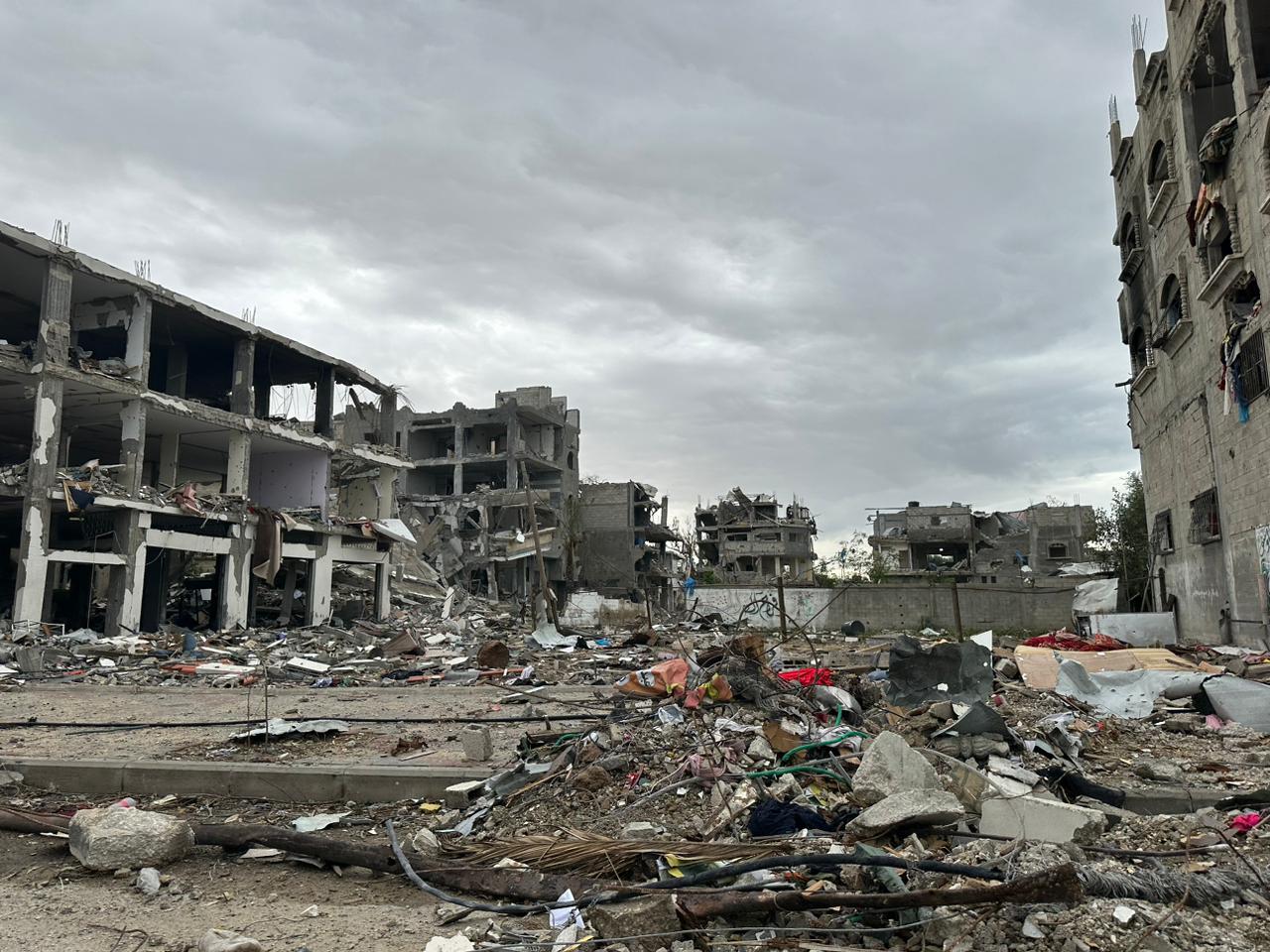Fighting in Gaza is killing innocent people and wiping out a thousand-year-old heritage
"Fierce fighting" is underway in the Strip, but violence is mounting in the West Bank as well. Since the end of the truce, more than a thousand Palestinians have been killed. The families of Israeli hostages meet and slam Netanyahu. A Danish scholar remembers Gaza’s historical, cultural, and artistic value to Christians, Muslims, and Jews. The future of its people is at risk.
Jerusalem (AsiaNews) – The Israeli military announced that “fierce fighting" is taking place in Gaza with intense airstrikes causing numerous victims and a long trail of blood; since the end of the temporary ceasefire on 1 December, at least 1,207 Palestinians have died, the UN High Commissioner for Human Rights (OHCHR) reports.
Hope for a de-escalation of the conflict when fighting halted for a few days to allow Israel and Hamas to exchange prisoners for hostages proved premature as recent developments show.
Israeli planes have hit more than 250 Hamas targets in Gaza but are also carrying out strikes in southern Lebanon, in particular near the demarcation line.
For the Israeli government, at least a month of "pressure" is still needed before talking about a new truce with Hamas, ruling out a new prisoner exchange in the near future.
This position has led the families of the hostages to criticise Prime Minister Benjamin Netanyahu during a meeting yesterday, which saw moments of great tension.
Israel Army Radio announced new attacks in the north and south of the Gaza Strip, where at least 138 Israeli and foreign hostages are still held by various militant groups.
Violence is also mounting in the West Bank, where two more Palestinians were killed in clashes with Israeli soldiers at the Al-Fara refugee camp and 11 more people were wounded near Nablus.
The war has displaced 600,000 people in the south of the Strip and killed 16,330 Palestinian, 75 per cent of them women and children, this according to Hamas (while Israel has reported more than 1,200 Israeli dead).
One of the risks is that Gaza's historical and cultural heritage might be erased forever. Jakob Skovgaard-Petersen, professor of Islamic and Arabic studies at the University of Copenhagen, former director of the Danish-Egyptian Dialogue Institute in Cairo from 2005 to 2008, sounded the alarm in a long article in Point of View International (POV), an online Danish publication.
The scholar says that Gaza’s fate resembles that of other cities in the region devastated by war, from Aleppo to Mosul. "In the last ten years," he writes, "some of the oldest cities in the world have been brutally razed to the ground", cities comparable to “Amsterdam, Madrid and Glasgow", with their "art, culture and history" lost.
One of the buildings that symbolises the destruction in Gaza is the Al-Shifa hospital, the largest in Gaza City. "[B]esieged, bombed and searched," it is named after Kitab al-Shifa, the Book of Healing, written by philosopher and physician Ibn Sina (d. 1037).
Many modern hospitals and pharmacies have been named after him and his books. He authored a medical book that was the most advanced for many centuries and a reference in medicine until the 17th century.
Moreover, "the thinly woven cotton fabric for dressing wounds, gauze, takes its name, like many other imported goods, from the place from which it came: Gaza,” Prof Skovgaard-Petersen points out.
The Islam specialist notes that Gaza was once a "Christian city" and Christians have contributed to its development with the creation of two prestigious schools, one of which was founded on the initiative of Yasser Arafat.
The school run by the Sisters of the Rosary, hit hard in November, has educated many Muslim students. The Latin parish of the Holy Family and the church of St Porphyry are symbols of the devastation of Israeli airstrikes that hit the heart of Gaza's Christian community.
“Gaza,” writes Skovgaard-Petersen, “also has one of the greatest saints in both Catholic and Orthodox traditions, Vitalis (died circa 625 AD), who became a symbol of day labourers and the charity work for helping prostitutes with whom he prayed at the end of the day.
"Day labourers are still a major force in Gaza, and Gazans have been standing in long lines for years to work for Israeli employers on the other side of the border." This source of income was crucial for many families, which the war has ended causing further impoverishment.
The symbolic city has also been linked to the Jewish tradition since the time of the Crusades, so much so that it became "a centre of Jewish trade and learning in the 13th century. It was in Gaza that the Jewish mystic Nathan of Gaza proclaimed in 1665 that the messiah had now arrived in the form of another mystic, Shabtai Zvi (died in 1676)."
Finally, with respect to Islam, he writes that the link "goes further back before the Muslim conquest" in the year 635. In fact, “In one of the city's oldest mosques there is a tomb for the prophet Muhammad's great-grandfather Hashim, and it is said that it was here that Umar had traded and earned his money before he converted to Islam.”
For many centuries, strategic located Gaza was a "stage" for many of the "great empire builders: Egyptians, Babylonians, Persians, Alexander, Romans, Mongols, Ottomans and British."
However, in the last century, in the age of "nationalism", the city has experienced progressive isolation, turning into an "open-air prison" and is now a “heap of ruins.”
“From a cosmopolitan centre, Gaza City has become a terminus. But if its people are to have a future, Gaza's history and culture must also be able to rise from the ashes," starting by protecting and saving “its inhabitants”.
17/05/2021 10:29
09/06/2018 09:05







.png)










